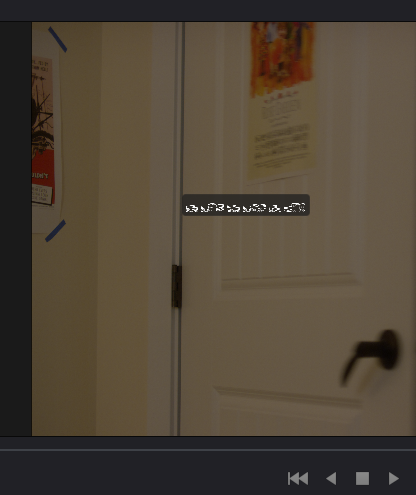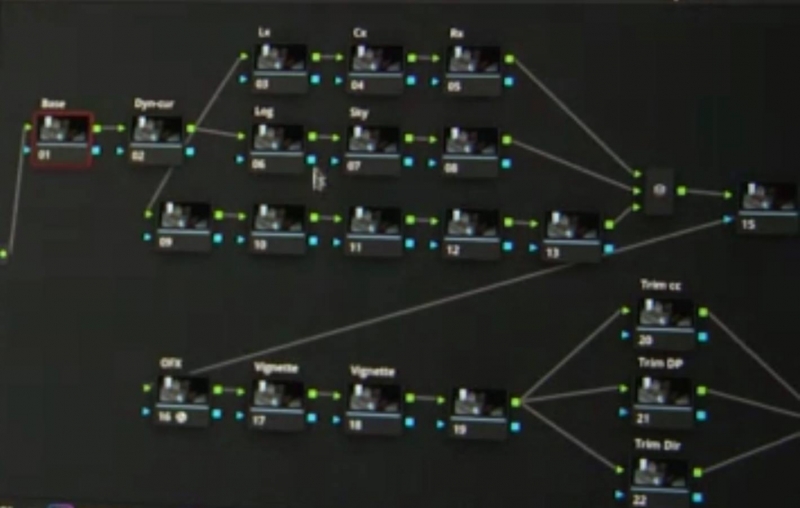-
Posts
52 -
Joined
-
Last visited
Content Type
Profiles
Case studies - Free
Case studies - Premium
Resources
Insider
Courses
Forums
Store
Posts posted by Marcelo Cosme
-
-
-
Hi, in series and movies you do the color grading work on the original camera files or an export for example EXR clip sequence or ProREs444 ...
-
28 minutes ago, Amada Daro said:
That's a broad question, can you be more specific?
In a simple way, what formats and methods you use workflow with these programs after grading in Resolve.
-
What workflow do you use to work with Avid / Nuke / Flame?
-
Hi everyone. I know this subject is somewhat uncontroversial at the moment, but I'd like to know what your experience creating HDR is through Resolve. Anyone using TVs instead of monitors like the Sony X300? I use an LG B7 as the primary monitor and almost always what I see in it during grading is very different from the material on YouTube.
-
Insane this structure of Volpatto. Any day, I will try to recreate to understand these relinked nodes.
-
23 hours ago, Nicolas Hanson said:
Eu trabalho com o LUT que é fornecido pelo DOP (a câmera LUT), e aplico-o no nível do nó para que eu possa classificar antes e depois dele.
THANKS NIC
-
 1
1
-
-
Good morning, reading a news with the excellent Walter Volpatto,
I noticed the gigantic structure of fixed nodes he uses.https://video.repubblica.it/spettacoli-e-cultura/oscar-e-italiano-il-mago-dei-colori-di-hollywood-da-star-wars-a-green-book-cosi-creo- emozioni / 327436/328037? fbclid = IwAR1D6Qfv3Wzcebhy6f4IcobJaRMnQaDGQgY5VpEeLl-aTBgF4pFlrfrwX44
Does anyone here also use something like that?
If you use like and its structure?
I always use a structure like this: Noise reduction, Base, Curves, Key adjustments for faces and other details (parallels), Vignette and a Fine adjustments if necessary.
-
 3
3
-
-
Hello.
Professionally, you use LUT or always work with the clean base.Example: Movie/advertising job recorded in Arri Raw or LOG. Do you use a 3D Lut Arri_log_Rec709 or Color Space Transform or do the base zero?
-
People, more questions about HDR. This time HDR10 +. I understand the operation, I understand the sidecar generated, but I still do not understand how to export and where to view HDR10 + nor YouTube or Vimeo still interprets, am I correct?
-
Hi, what are the benefits (or not) of using Colorfront Transkoder to create the IMF for Netflix Dolby Vsion instead of using the Davinci Resolve Studio 15?
-
55 minutes ago, Chris DiBerardino said:
What's your processor? Also, are you doing supervised sessions on this system or working unsupervised? If unsupervised I'd say you can work on anything as long as it is capable of running the program. Then it's just a matter of what performance you can tolerate!
Intel I7 8 Gen...
-
4 minutes ago, Chris DiBerardino said:
It should be good enough to do basic color correction, a couple windows and maybe an OFX plugin. 32GB is enough RAM, but more importantly you need a decent CPU as well. It also depends on what codec you are grading.
If you are grading 4k HDR DPX, you are going to need a really fast RAID. If you are grading Pro res, then your drives can be a bit slower, but then you are going to need your CPU to do a bit heavier lifting. The graphics card really only effects real time playback when adding nodes.
Thanks Chris, I use PCI SSD and RAID to work.
-
Hi, I'm making the color of a movie, but the director and photographer are not following the grade. They are in another state. What is the best form of online presentation, I currently upload a Prores422HQ. Being this a form of visualization, which is the best player to have no errors of gamma, etc ... Always I have fear of who the client not really seeing the material as it should be seen.
-
Hi.
Zotac Geforce Gtx 1080 Ti Amp Edition 11gb is good to color grading 4k HDR?
I have win10 PC with 32GB RAM, more RAM is good to this work too?Thanks!
-
Hi everyone, I'll start grading a short and he will be attending festivals, so my idea is to deliver 2 final files, in different color spaces, Rec709 and P3. In addition the trailer will have an HDR version. My initial idea was to do everything through ACES since my material is RED, but I'm not 100% comfortable in using ACES, I had some problems with an F55 material ... So I'm thinking of using the Color Space Transform directly in the Nodes . What do you think? Do you advise using it?
-
Hello, I use DisplayCAL to calibrate my reference monitor through Davinci Resolve (SpectralCal CalMAN). Currently I have acquired a 4k UHD monitor that recognizes 100% REC 709, 97.7% DCI-P3, 76.9% REC2020 ... What is the best way to do the calibration? Do I use the standard Resolve Rec709 D65 or should I try to change to HDR D65 Rec 2020?
-
I'm starting to study HDR and at the moment I can not buy a Flanders or Dolby. Here in Brazil everything costs 6x more ... I have a Dell U2718q that says 4k HDR. Do anyone know this monitor or can tell me if I can get good results with it? In the manual says it reaches 550 nits ... In a few months I should buy a LG C8 but at the moment my hope is Dell ... Thanks!
https://www.dell.com/community/Monitors/U2718Q-HDR-peak-brightness/td-p/6058747
-
Hello everyone.
I'm starting to study HDR color correction. Currently working / studying on a Win10 station running Davinci R15 Studio, Decklink Mini Monitor 4k and 3 Dell monitor, being 2 1080 (GUI and Scope) and a 4k HDR (model: UP2718Q) connected to Decklink through the HDMI port using an Atevon cable 4K. I know it's not the best setup for HDR, but it's a Home Office workstation, and I do not think anyone can have a Dolby Pulsar at home ...I did some tests, viewing on LG TVs B7 through Youtube and worked well the HDR that I rated in Resolve. But now I would like to take a step forward, I want to be able to simultaneously view the HDR and SDR classification using 2 monitors. I know the process of using the Right Eye / Left Eye stereo grading tools to make adjustment passes for Standard Dynamic Range (SDR) / High Dynamic Range (HDR) color gradients.
My questions now are what I need to change in my current setup and how to do this split signal, right eye monitor SDR, left eye Monitor HDR for example.
I can send through my Decklink Mini Monitor, send 2 signals one through the HDMI to one monitor and another through the SDI to another monitor using an SDI to HDMI converter?
Or I need to buy another card with DeckLink 8K Pro for example and an SDI to HDMI converter (remembering that it's home, I need the best cost benefit) ...
How do I specify which monitor is the HDR and what is the SDR?
Thank you!
-
18 hours ago, Anton Meleshkevich said:
@Marcelo CosmeAdd spaces.
AGFA 200X0.180.410.41 is AGFA 200X - 0.18 - 0.41 - 0.41Thanks, I was browsing through the cell phone and did not even realize it was just the spacing between the numbers.
-
12 minutes ago, Emily Haine said:
Abby just answered your question, it's totally up to you. Colorists do what they prefer.
Thanks Emily...
I know it's a very personal matter. -
On 4/8/2017 at 7:44 PM, Abby Bader said:
The values below are the channel combinations used on classic black and white films stocks. You could try to input the numbers in the monochrome mixer and see if the response is close to your perception of how it should look like.
Film Type | Red Green Blue
AGFA 200X0.180.410.41
Agfapan 250.250.390.36
Agfapan 1000.210.400.39
Agfapan 4000.200.410.39
Ilford Delta 1000.210.420.37
Ilford Delta 4000.220.420.36
Ilford Delta 32000.310.360.33
Ilford FP40.280.410.31
Ilford HP50.230.370.40
Ilford Pan F0.330.360.31
Ilford SFX0.360.310.33
Ilford XP2 Super0.210.420.37
Kodak T-Max 1000.240.370.39
Kodak T-Max 4000.270.360.37
Kodak Tri-X 4000.250.350.40
Normal Contrast0.430.330.30
High Contrast0.400.340.60
Generic B/W0.240.680.08
Hi Abby.
I did not understand your numbering ..
I use the Davinci in RGB mixer I have only -2 up to 2 ... -
17 hours ago, Abby Bader said:
I suggest that you read the case studies on this site as those will enlighten you on the use of printer lights and how common it is.
There are many ways to set up nodes. Balancing and exposure adjustments first followed by looks is the most common. If you prefer to use printer points or primaries is totally up to you.
Thank you Abby. I have my workflow, and it works ... But I wonder if there is a common sense among colorists or if each follows their own instinct (laughs) ... Many colorists came from the days of the film, and of course there was a pattern of work. Today with so much tool, so many cams and so many codecs, there are a thousand ways of doing the same thing.
-
Hello.
I have some questions and would like your help.1 - Do you frequently use Printer Lights?
2 - Do the classifications via LOG Wheels or PRIMARY Wheels?
3 - Do you use any base structure of nodes? Example: Node 1: NR, Node 2: Primary, Node 3: Saturation, etc ...
4 - Noise Reduction use at what stage of the process? I always use it as the first node, but I already got good results putting NR after the primaries ...
I'm creating a workflow for a series that I start coloring now in June.
At first I think of working in this format:
Node 1: General Printer Lights (I have many scenes pulling into the green)
Node 2: Log Wheel Expo (Blacks + Contrast + Pivot)
Node 3: Log Wheel WB (Correction in Shadows, Mids, Highlights) "if necessary"
Node 4 or more: Start Creative Look ...I know color correction has no recipe, but I would like to have a rational workflow to work with my assistants and other colorists remotely.




Davinci Panel - Cleaning
in Panels
How do you usually clean your control panel?
My hands are oily and the panel smudges.
I can use isopropyl alcohol?